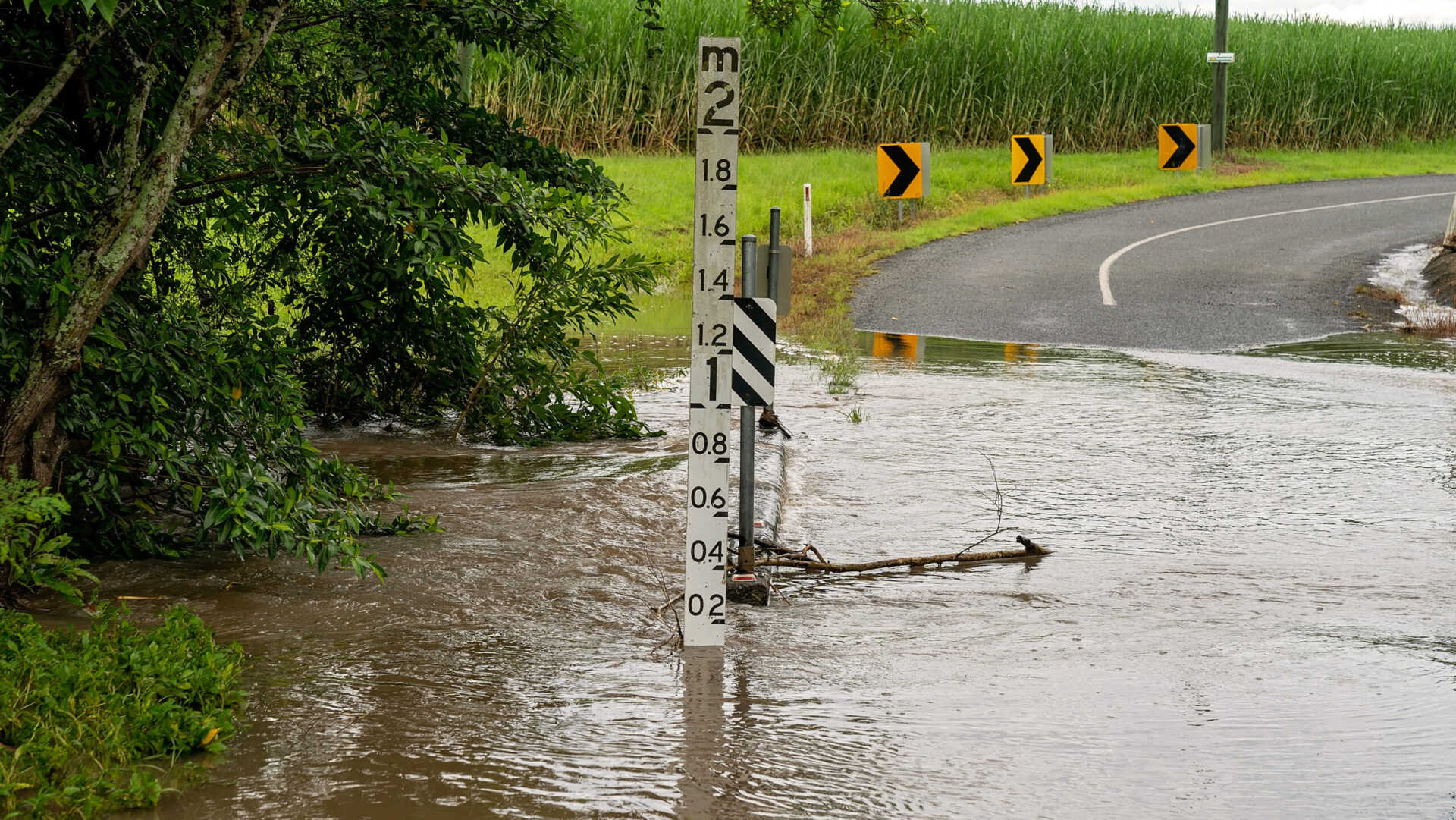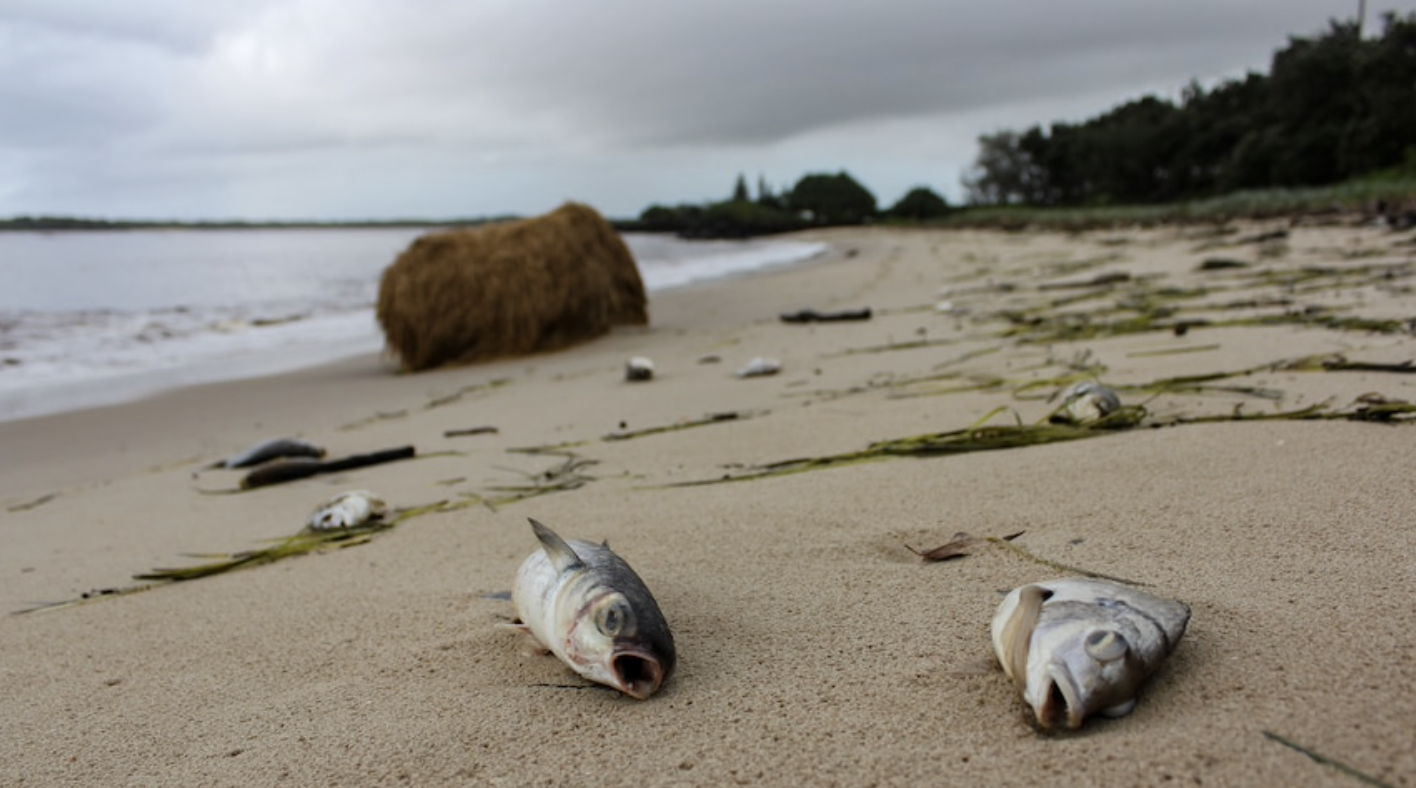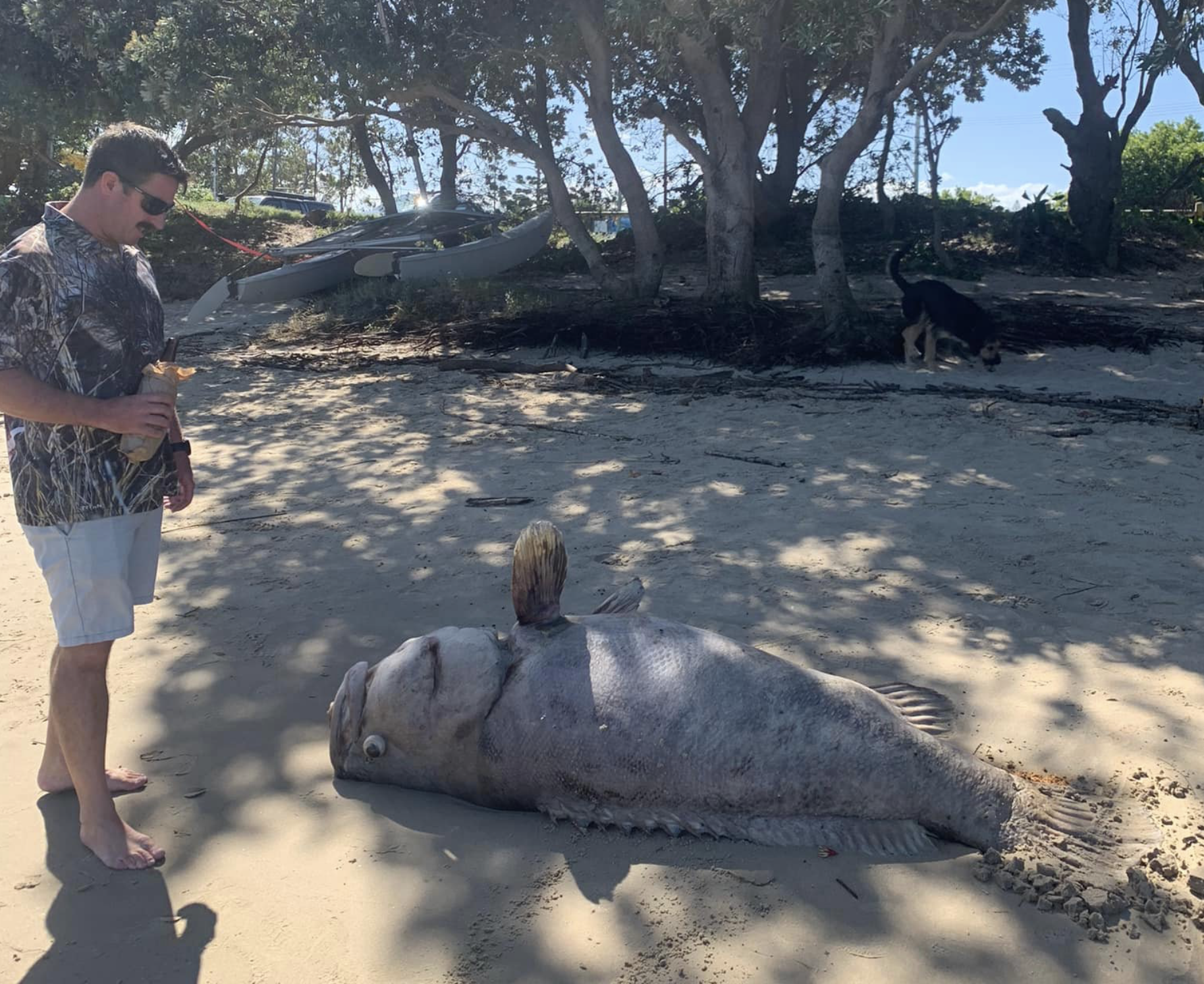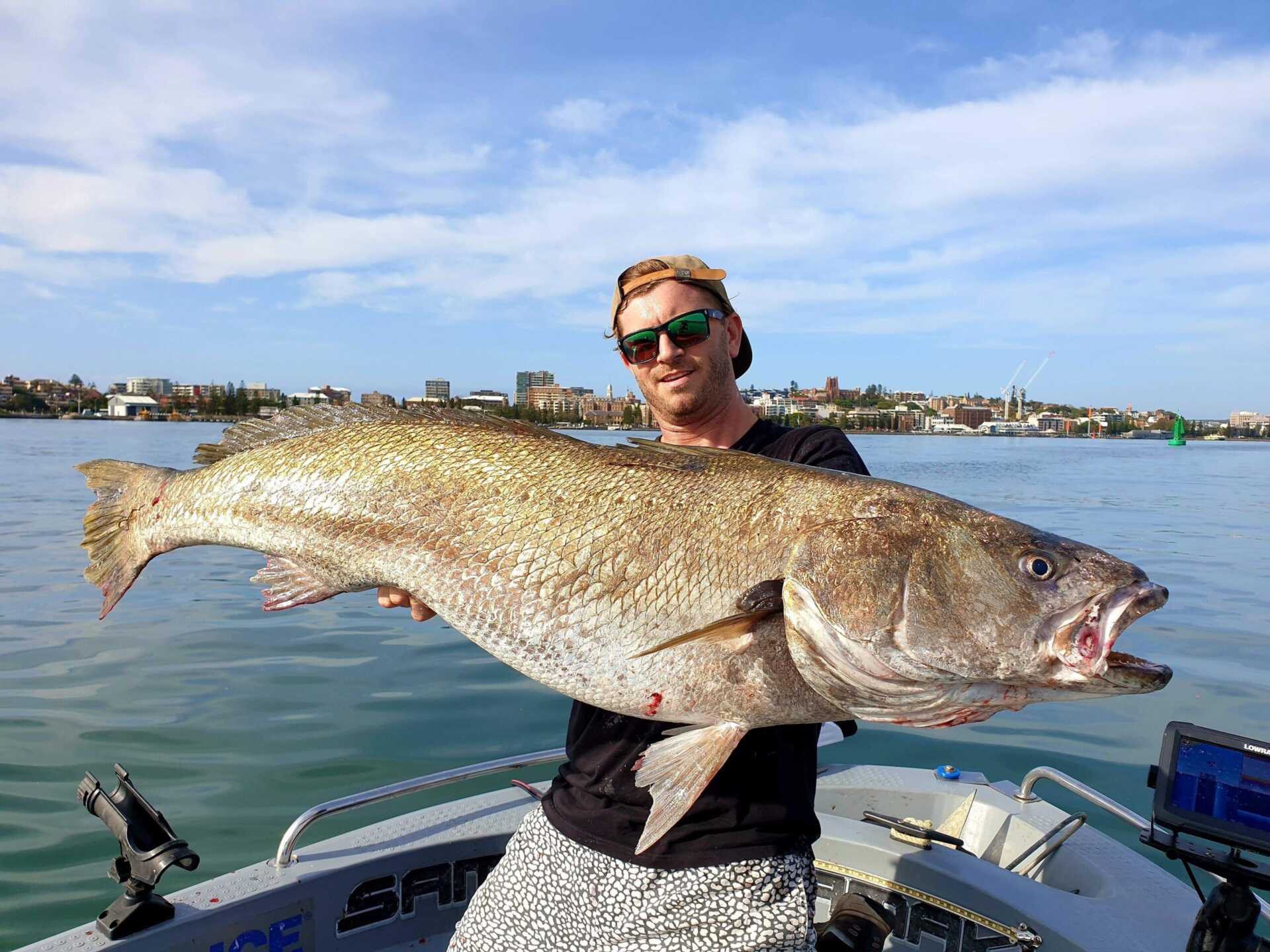Floods – What do they mean for fish?

When the rain begins to hit the windows of our cars, and local sporting matches are called off, have you ever thought about what is going on in places that already have water in them?
As the aftermath of flooding along the eastern seaboard of Australia continues to dominate headlines, we thought it was time to look at what a flood means for the health and future of our waterways.
Yes, the images on the news show brown water and flooded roads, but what is going on underneath the surface?
Let’s picture the recent scenario that unfolded in southeast Queensland and northern NSW, and use it to understand what a flood does to a waterway. As the rain begins, the drainage systems begin to reach capacity, and the overtop banks carrying loose-leaf litter and woody debris is slowly washed into the river.
From the land, beetles, spiders, worms and crustaceans are dislodged from their habitats and swept into the water. Built-up sand and silt that glues the leaves to the ground is slowly loosened, with particles also breaking away into the water.
As the rain continues, the clarity of the water decreases. Every handful of mud, silt and sediment turns the river brown and discoloured. Riparian vegetation bends and roots hold tight, buried deep in shoreline soils, sands, and gravel. Eventually, these roots lose grip and the banks begin to cave.
It starts with the overhanding banks sliding into the water and carving out a wider river, which then makes its way to nearby trees and shrubs which also eventually fall into the water.
As the water becomes more unpredictable, any surrounding litter in the area is carried into the path of least resistance – the direction of the water – with bridges and weirs providing a build-up zone for anything that tries to pass through.
This is all before breaking news channels have even called it a ‘flood’. As the pressure and amount of water increases, the riverbanks burst.
Anything in the path of the surging water becomes part of the river, with house debris, cars, bins and fences all joining the flood of water pushing downstream. At this stage, the flood is now making front page news.
What does this mean for the marine life in our waterways? Knowing the effects of a flood is important for understanding the issues that impact the fish in affected waterways.
Casual rain falls in a system can benefit the productivity of the waterway. However, too much rain can lead to negative outcomes for fish and the surrounding environment. To understand this divide, here are some key things to know for next time you hear ‘flood warning’ on the news, which as you will see, isn’t always ‘bad news’.
- One of the major long-term benefits of floods for fish includes new and improved habitats being relocated to rivers and streams. As water flows downstream, pools and deeper channels are carved, and large woody material gets incorporated into the stream bed to become shelter-offering habitat structures. Sand and silt are cleared away, creating better spawning habitat. Summer flooding events may increase habitat for juvenile and adult fish and allow all fish to eat and grow more.
- Flooding can be important for some fisheries when it comes to connectivity. For many rare freshwater fish that live in isolated waterways, flooding is critical for breeding, population connectivity and genetic diversity. Without floods, some systems can never be linked back to the main body of water that created the lagoon or billabong. Without floods, these fish would be isolated for their entire life cycle.
- Floods boost the food sources and water quality of a system by washing down nutrient-rich soils, insects and small macroinvertebrates. Think of it like a boost for a system – the new water brings new food, which brings new and improved conditions for fish to thrive.
- As the water seeps over the banks of the river and submerges surrounding floodplains, new opportunities for fish are created around feeding, breeding and shelter. Traditionally confined to the river’s low-water level width, a flood is an opportunity for fish to enter the floodplain and explore available new habitats. Whether it be the insects and small critters that live in these areas, the organic matter and nutrients, or the standing timber and plants for a place for them to temporarily live, floodplains are the holiday that all fish need every so often.
- Flooding can allow invasive fish species to travel between impoundments and waterways. When there is limited rain, this can be beneficial to the health of a system, with needed nutrients and food being supplied to fish. Whenever this reaches flood levels, it can mean fish like carp, redfin and tilapia are transported beyond waterways where they are contained.
- Fish can die after rainfall as the initial flows are full of sediment and organic matter that consumes oxygen. When flooding occurs, excess organic carbon from plants enters the water. The organic carbon is then processed by microbes, using oxygen. This can result in what is known as a hypoxic blackwater event and no oxygen means dead fish. Blackwater has been the cause of many fish kills in coastal NSW rivers and the Murray-Darling Basin.
- Flooding can impact the feeding ecology of fish. As salinity changes, so too does the food available. Low oxygen that kills fish will also kill worms and other food for fish. Food sources that might usually be found in the salty estuary are no longer there as the flood makes the estuary mostly freshwater – all the way to the ocean.
- Marine life can be killed in large numbers due to suspended sediments, nutrients, pesticides and other contaminants that run into the river. Bankside vegetation and seagrasses are destroyed by the force of the water and massive soil erosion occurs on rivers flanked by cleared grazing lands.
Now, you’re thinking – how is all this going to help me catch a fish? And why is it every time I walk into a pub when it’s raining the first thing I hear is – “gee the fishing will fire soon”? Unfortunately, the answer is not as straightforward as you may think…it really depends on the scale of and path that the flooding takes, as to whether it have an overall positive or negative impact for fish.
Yes, there are lots of nutrients and other food around for fish to eat but dead fish don’t eat much and it will take time before the fishing will fire again as the whole food web underneath fish needs to return first.
That’s why, as the impacts of these latest floods on fish continue to make the news, OzFishers, volunteers and concerned community members are getting ready to help in the recovery process.
We are monitoring the fish kills, flood debris and water quality in local rivers and keeping a close eye on conditions. This helps us understand the areas and the types of fish that have been hardest hit, so we know where to focus our habitat recovery efforts for speedy population recovery.
OzFish is planning to reschedule our Clean Up Australia Day events in Northern NSW and Southeast Queensland, and we are calling on everyone to keep an eye out for when the events will be on. Major floods like the ones we have witnessed tend to further damage already degraded systems.
Our waterways will need a hand now more than ever.
To keep an eye on the dates, head over to the OzFish Events Page
Want to add to the discussion on floodwaters? Head over to our socials and leave a comment!







